3DWarehouse

History of the Sword - Late Bronze Age (800-700 BCE) - British Ewart-ParK Sword
by 3DWarehouse
Last crawled date: 1 year, 7 months ago
The Bronze Age is considered the third phase in the development of material culture among the ancient peoples of Europe, Asia, and the Middle East, following the Paleolithic and Neolithic periods and preceding the Iron Age. The term also denotes the first period in which metal was used. The date at which the age began varied by region; in Greece and China it began before 3000 BCE, in Britain not until c. 2100 BCE. During this time period, the evolution of blade weapons evolved from the dagger or knife in the Early Bronze Age to the earliest narrow bladed 'rapier' swords optimized for thrusting from the Middle Bronze Age to the typical leaf-shape 'slashing' blades in the Late Bronze Age, with each geographic region developing its' own myriad variations on the developing sword types. In the British Isles, starting around 2000 BCE, increasing trade with the countries of Atlantic Europe saw the slow introduction of various continental sword types, which over time led to the development of locally produced variations on these swords. The sword modeled here is a reproduction of a sword developed during the Late Bronze Age Ewart-Park industrial phase (800-700 BCE) named for a founders hoard discovered in Ewart Park in Northumberland Northern Britain. The sword is of typical leaf-blade design consisting of a lenticular cross section blade with midrib and a flanged hilt with bone inserts and bronze covered pommel. The sword has an overall length of 26 1/3 inches (67cm). #British_Isles #bronze #bronze_age #England #Ewart_Park #founders_hoard #hoard #leaf_blade #slash #slashing #sword #weapon
Similar models
3dwarehouse
free

History of the Sword - Mid Bronze Age Penard Phase (1,200-1000 BCE) - Irish Ballintober Sword
...tish_isles #bronze #bronze_age #england #founders_hoard #hoard #ireland #leaf_blade #panard_phase #slash #slashing #sword #weapon
3dwarehouse
free

History of the Sword - Middle Bronze Age (1,300 BCE) - British Rapier
...british isles around 1,300 bce. overall length = 20 3/8 inches #british_isles #bronze #bronze_age #england #rapier #sword #weapon
3dwarehouse
free

History of the Sword - Middle Bronze Age (1,500 BCE) - Minoan Rapier
...ation island of crete around 1,500 bce. overall length = 33 7/16 inches #bronze #bronze_age #crete #minoan #rapier #sword #weapon
3dwarehouse
free

History of the Sword - Late Bronze / Late Iron Ages (1,200 - 500 BCE) Naue Type II - Style B
...european #flange_hilted #greek #greese #iron #iron_age #mycanae #mycanaean #spain #spanish #sword #syria #syrian #warrior #weapon
3dwarehouse
free

History of the Sword - Late Bronze / Late Iron Ages (1,200 - 500 BCE) Naue Type II - Style A
...european #flange_hilted #greek #greese #iron #iron_age #mycanae #mycanaean #spain #spanish #sword #syria #syrian #warrior #weapon
3dwarehouse
free

History of the Sword - Middle Bronze Age (1,500 - 1,300 BCE) - Irish Lissane Rapier
...sword of its' type, with a blade length of 30 1/4 inches. #bronze #bronze_age #ireland #irish #lissane #rapier #sword #weapon
3dwarehouse
free

History of the Sword - Late Bronze Age (1,200 BCE) Mycenaean Flange Hilt Short Sword - Version 2
...l length of swords = 17 1/8 inches. #bronze #bronze_age #flange_hilted #greek #greese #mycanae #mycanaean #sword #warrior #weapon
3dwarehouse
free

History of the Sword - Late Bronze Age (1,200 BCE) Mycenaean Flange Hilt Swords
...hs of the swords are 26 3/4 inches. #bronze #bronze_age #flange_hilted #greek #greese #mycanae #mycanaean #sword #warrior #weapon
3dwarehouse
free

History of the Sword - Late Bronze Age (1,200 BCE) Mycenaean Flange Hilt Short Sword - Version 1
...erall length of swords = 17 inches. #bronze #bronze_age #flange_hilted #greek #greese #mycanae #mycanaean #sword #warrior #weapon
3dwarehouse
free

History of the Sword - Middle Bronze Age (1,400 BCE) Mycenaean Warrior Sword
...nt. bc. the overall sword length = 30 9/16 inches. #bronze #bronze_age #greek #greese #mycanae #mycanaean #sword #warrior #weapon
Ewart
grabcad
free

Ewarts Petcock - Triumph Tiger Cub
...ed thread.xls with whitworth thread details and the thread modeller plug-in - http://labs.autodesk.com/utilities/thread_modeler/)
grabcad
free

Fairbairn–Sykes fighting knife
...or poignard with a foil grip developed by william ewart fairbairn and eric anthony sykes in shanghai based on...
3dwarehouse
free

T greep ewart
...t greep ewart
3dwarehouse
3dwarehouse
free

Ewart Dining Table
... inspired marble top. wayfair sku:rswh1906 view this product on wayfair learn more about the wayfair trade program #dining_tables
3dwarehouse
free

Ewart Park Sword c800BC
...ng bronze cast, and bronze cast fitted with wooden pummel and hilt. both cast in 2012, on the 200th anniversary of their finding.
3dwarehouse
free

Albion Squire Sword 3d
...other swords. it is a type xvi sword from ewart oakeshott’s typology. #3d_sword #albion_squire #albion_sword #archers_sword #crossguard #knight_sword #knightly_sword...
3dwarehouse
free

Prince of Wales Armouries
...built: 1915. architects: e. c. hopkins and d. e. ewart during the first world war the 53rd and 233rd...
3dwarehouse
free

'Gladstone Cottages', Cam
...infill additions also at rear. terrace named after william ewart gladstone who was prime minister four times, firstly from...
3dwarehouse
free

Statue of William Gladstone, Glasgow
...statue of william gladstone, glasgow 3dwarehouse william ewart gladstone was born on 29 december 1809 and died...
Bce
3d_export
$100

the persian column
...with the invasion by alexander the great in 330 bce when persepolis was burned...
3d_export
$50
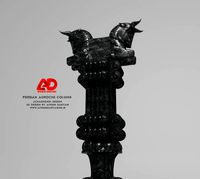
Persian columnachaemenid
...with the invasion by alexander the great in 330 bce when persepolis was burned...
3dfindit
free

BCE
...bce
3dfind.it
catalog: a&t
3dfindit
free

BCE
...bce
3dfind.it
catalog: a&t
3dfindit
free

BCE
...bce
3dfind.it
catalog: a&t
3dfindit
free

BCE
...bce
3dfind.it
catalog: a&t profile
thingiverse
free

4th C BCE Kneeling Figure by artsmia
...ab.
no scale set in this stl; the real thing is about 11 inches (29cm) tall.
full-color object on sketchfab: https://skfb.ly/zhpf
thingiverse
free

5th C BCE Chinese Tiger by artsmia
...ollections.artsmia.org/art/1035/tiger-china
the object on sketchfab:https://sketchfab.com/models/8fe05f974a004d348d75ef76e045946b
thingiverse
free

4th C BCE Torch Bearer by artsmia
...te of arts:https://collections.artsmia.org/index.php?page=detail&id=825
scanned with 123d catch, cleaned up in netfabb basic.
thingiverse
free

Osiris, 644-30 BCE by artsmia
...ia.org:https://collections.artsmia.org/art/93/god-osiris-ancient-egyptian
here's the model on sketchfab:https://skfb.ly/6bthy
700
3d_export
$27

Boeing 737-700
...boeing 737-700
3dexport
boeing 737-700
turbosquid
$26

Shell-700
... available on turbo squid, the world's leading provider of digital 3d models for visualization, films, television, and games.
turbosquid
$13

Nokia 700
... available on turbo squid, the world's leading provider of digital 3d models for visualization, films, television, and games.
turbosquid
$5

Remington 700
... available on turbo squid, the world's leading provider of digital 3d models for visualization, films, television, and games.
3ddd
free

Siemens IQ-700 LC958BB90B
...siemens iq-700 lc958bb90b
3ddd
siemens , вытяжка
siemens iq-700 lc958bb90b
3ddd
$1

Ngoma drum 700 willowlamp
...ngoma drum 700 willowlamp
3ddd
ngoma , drum
люстра ngoma drum 700 willowlamp
turbosquid
$15

Remington 700-2
...id
royalty free 3d model remington 700-2 for download as max on turbosquid: 3d models for games, architecture, videos. (1341090)
3ddd
$1

SWAROVSKI BLOOM 700 mm
...swarovski bloom 700 mm
3ddd
swarovski , bloom
swarovski bloom
maximum length 700 mm
3ddd
$1

Topdevice TDS-700
... колонки
акустическая система topdevice tds-700
размеры:170x295x230 мм
материалы corona render!
3ds max 2011 , fbx , obj
3ddd
$1

Grilli 700'Antiquariato
...700'antiquariato
3ddd
grilli , витрина
шкаф фабрики grilli 700'antiquariato
Late
3ddd
$1
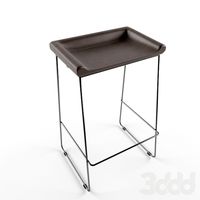
Late
... барный
барный стул отсюдаhttp://www.danish-store.ru/collections/chairs/products/late?variant=890643065
turbosquid
$400

Late Triassic Earth
... available on turbo squid, the world's leading provider of digital 3d models for visualization, films, television, and games.
turbosquid
$400

Late Ordovician Earth
... available on turbo squid, the world's leading provider of digital 3d models for visualization, films, television, and games.
turbosquid
free

Late Model Wings
... available on turbo squid, the world's leading provider of digital 3d models for visualization, films, television, and games.
3d_ocean
$9

Clear Late Afternoon
...d a vertical cross version. spherical map has a resolution: 5000×2500 px. light probe resolution: 3000×3000 px vertical cross ...
cg_studio
$99

Tiger - Late Production3d model
...gstudio
.lwo .c4d .3ds .obj - tiger - late production 3d model, royalty free license available, instant download after purchase.
turbosquid
$99

iMac Late 2012 Station
... available on turbo squid, the world's leading provider of digital 3d models for visualization, films, television, and games.
turbosquid
$3

late hours dress 03
... available on turbo squid, the world's leading provider of digital 3d models for visualization, films, television, and games.
turbosquid
$3

late hours dress 02
... available on turbo squid, the world's leading provider of digital 3d models for visualization, films, television, and games.
turbosquid
$39

Knight's Bastard Sword, Late Medieval PBR
... available on turbo squid, the world's leading provider of digital 3d models for visualization, films, television, and games.
British
3d_ocean
$9

British Clock
...british clock
3docean
british clock interior
quality model british clock for your interior.
3d_export
$6
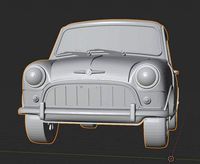
british car
...british car
3dexport
british car
3ddd
$1

British flag
...british flag
3ddd
флаг
british flag
3d_ocean
$5

Decorative british box
...decorative british box
3docean
box british decorative
decorative. quality model british box
turbosquid
$10
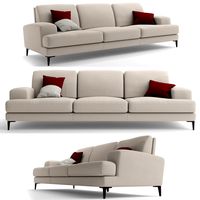
British sofa
...squid
royalty free 3d model british sofa for download as max on turbosquid: 3d models for games, architecture, videos. (1435097)
turbosquid
$5
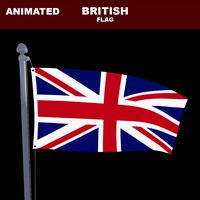
British Flag
...squid
royalty free 3d model british flag for download as max on turbosquid: 3d models for games, architecture, videos. (1332182)
3ddd
$1
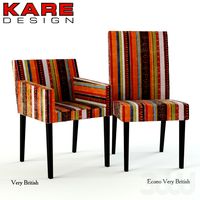
Kare Very British
...
szerokość (cm):54
wysokość (cm):79
głębokość (cm):59
econo very british
szerokość (cm):49
wysokość (cm):99
głębokość (cm):58
3ddd
$1

British Collection
... чашка
british collection.
в наборе: кресло, две подушки, картина, чашка.
3ds max 2011,2014,obj + textures
turbosquid
$30

British Policewoman
... available on turbo squid, the world's leading provider of digital 3d models for visualization, films, television, and games.
turbosquid
$15

British Guitar
... available on turbo squid, the world's leading provider of digital 3d models for visualization, films, television, and games.
800
3d_export
$5
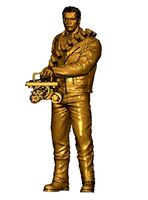
t-800
...t-800
3dexport
t-800
3d_export
$27

BOEING 787-800
...boeing 787-800
3dexport
boeing 787-800
3d_export
$17

Boeing 737-800
...boeing 737-800
3dexport
boeing 737-800
3ddd
free

Pregno 800 parete
...pregno 800 parete
3ddd
pregno , parete
pregno 800 parete
turbosquid
$12

Chair 800'
...alty free 3d model chair 800' for download as obj and c4d on turbosquid: 3d models for games, architecture, videos. (1314033)
3ddd
$1

Medea art 800
... ар-нуво , модерн , подставка
medea art 800
3ddd
$1

OPULANCE 800 Console
...sole
3ddd
opulance , rak
умывальник opulance 800 console
производитель rak ceramics, оаэ
3d_export
$50

B737 800 3D Model
...0 737 800 b737 airlines plane airplane aircraft airliner commercial passenger jet boeing
b737 800 3d model tartino 13743 3dexport
3ddd
$1

Petracer’s 800 Italiano
... плитка
плитка petracer’s 800 italiano
каталог:http://www.petracer.it/wp-content/uploads/800_italiano.pdf
3ddd
$1

Masiero VE 800 10
...masiero ve 800 10
3ddd
masiero
люстра masiero ve 800 10 серии ottocento
History
turbosquid
$50

History Church
...alty free 3d model history church for download as max and fbx on turbosquid: 3d models for games, architecture, videos. (1284367)
turbosquid
$50

History Old Building
... model history old building for download as jpg, max, and fbx on turbosquid: 3d models for games, architecture, videos. (1276133)
turbosquid
$50

History old building
...l history old building for download as jpg, tif, max, and fbx on turbosquid: 3d models for games, architecture, videos. (1273146)
turbosquid
$5

Islamic Architecture History
... available on turbo squid, the world's leading provider of digital 3d models for visualization, films, television, and games.
turbosquid
$12

Dishes old history n2
...yalty free 3d model dishes old history n2 for download as max on turbosquid: 3d models for games, architecture, videos. (1575409)
3d_export
$18

history-historic site-tianlufang 12
...history-historic site-tianlufang 12
3dexport
history-historic site-tianlufang 12<br>3ds max 2015
3d_export
$18

history-historic site-tianlufang 13
...history-historic site-tianlufang 13
3dexport
history-historic site-tianlufang 13<br>3ds max 2015
3ddd
$1

Шкаф "History"
...рованс.http://lifemebel.ru/catalog/mebel_dlya_spalni/shkafy_tumby_komody/shkafy/model/stellazh_pearl_style_kfh10034_eg/
turbosquid
$73

Yacht Baia 100 History Supreme
... available on turbo squid, the world's leading provider of digital 3d models for visualization, films, television, and games.
3d_export
$18

ancient-history-book-bamboo slip 01
...1
3dexport
ancient-history-book-bamboo slip 01<br>max 2015 v-ray 3 max 2015<br>textures<br>all files in zip...
Bronze
3ddd
$1

Namuh bronze
...namuh bronze
3ddd
namuh bronce
namuh bronze
3ddd
$1

Swans in Bronze
...swans in bronze
3ddd
лебедь , статуэтка
swans in bronze
with 3d max 2014 and vray 3.0
design_connected
$16

Bronze Chaise
...bronze chaise
designconnected
brown jordan bronze chaise computer generated 3d model. designed by lamb, walter.
3ddd
$1

779088 Bronze Osgona
... osgona , lightstar
779088 bronze osgonahttp://www.lightstar.ru/
3ddd
$1

779218 Bronze Osgona
... osgona , lightstar
779218 bronze osgonahttp://www.lightstar.ru/
3ddd
$1

779318 Bronze Osgona
... osgona , lightstar
779318 bronze osgonahttp://www.lightstar.ru/
3ddd
free

779628 Bronze Osgona
... osgona , lightstar
779628 bronze osgonahttp://www.lightstar.ru/
3ddd
$1

Griffin / Palladian Bronze
...in , palladian bronze
коллекция griffin, модель palladian bronze. моделил по фотографии.
turbosquid
$20

MACE BRONZE
...osquid
royalty free 3d model mace bronze for download as max on turbosquid: 3d models for games, architecture, videos. (1660519)
turbosquid
$10

maytoni bronze
...uid
royalty free 3d model maytoni bronze for download as max on turbosquid: 3d models for games, architecture, videos. (1375073)
Age
3d_export
$245

aging man
...aging man
3dexport
high detailed aging man.<br>poses:<br>aging sequence:<br>faces / verts
3d_export
$30

Aged To Perfection 50 Age Cake
...so order real cake from this link: https://cakesburg.co.uk/products/age-to-perfection-50-cake?_pos=1&_sid=a15854854&_ss=r
3ddd
$1

Aged Pixel.Роter.
... постер
колекция постеров. автор работ aged pixel.http://fineartamerica.com/profiles/agedpixel.html
turbosquid
$10

Aged Chiar
...bosquid
royalty free 3d model aged chiar for download as obj on turbosquid: 3d models for games, architecture, videos. (1358073)
vizpark
$50

Aged Walls
... highly detailed old brick multitextures for architectural visualization, with bump, displacement, reflection and diffuse layers.
turbosquid
$60

Aged vase
...lty free 3d model aged vase for download as max, obj, and fbx on turbosquid: 3d models for games, architecture, videos. (1268812)
3ddd
free

Aran / AGE-LOW
...aran / age-low
3ddd
aran
фабрика aran, коллекция age-low
turbosquid
$49

Aged Couch
... 3d model aged couch for download as blend, dae, fbx, and obj on turbosquid: 3d models for games, architecture, videos. (1527087)
3ddd
$1

NEW AGE Linen Chair
...new age linen chair
3ddd
new age
кресло new age linen chair от curations limited
3ddd
$1

Aged Pixel.Brand Names - Grass
...ddd
aged pixel , картины
колекция постеров.brand names - grass автор работ aged pixel.
Sword
3d_ocean
$3

sword
...sword
3docean
sword
a high quality sword .
3d_export
$5

sword
...sword
3dexport
a sword made in a blender, a quality sword
3d_export
$35

Sword
...sword
3dexport
sword
3d_export
$10

sword
...sword
3dexport
sword
3d_export
$6

sword
...sword
3dexport
sword
3d_export
$5

sword
...sword
3dexport
sword
3d_export
$5

sword
...sword
3dexport
sword
3d_export
$5

Sword
...sword
3dexport
sword
3d_export
$5

sword
...sword
3dexport
sword
3d_export
$5

sword
...sword
3dexport
sword
Park
3d_ocean
$8

Park
...park
3docean
3d max park
3d max park model
3d_export
$5

park
...park
3dexport
it's a beautiful 3d park!
3d_export
free

Park
...park
3dexport
part of the park for games , advertisements , videos , etc .
3d_ocean
$25

Park Car
...park car
3docean
car park
the park car
turbosquid
$1

Park
...rk
turbosquid
royalty free 3d model park for download as max on turbosquid: 3d models for games, architecture, videos. (1618400)
3d_export
free

Park
...park
3dexport
a small park area with: fountain; benches; trees; a children's playground; mini-cafe; drinking fountains
3d_export
$11

Car park -parking de voiture
...ure
3dexport
parking pour voitures électriques et aussi pour autres voitures - parking for electric cars and also for other cars
3d_export
$65

Amusement park
...amusement park
3dexport
amusement park
3d_export
$16

bicycle parking
...bicycle parking
3dexport
bicycle parking
3ddd
free

park sculptures
...park sculptures
3ddd
-park sculptures-
